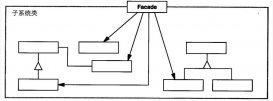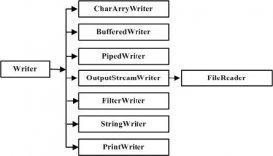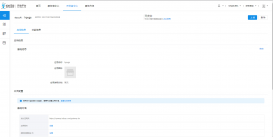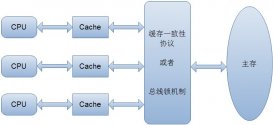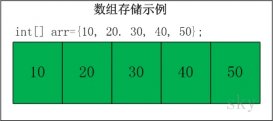前言:
之前想在filter层直接过滤httpServerletRequest请求进行日志处理,但是之后再getWriter()的 时候报already been call异常。查了下,才发现原来流形式的只能读取一次。。就好像食物,吃了就没了。。 所以在filter和inteceptor里面是没法通过获取request的流来进行日志记录的。
于是还是准备用通用的方法:controller层aop进行切面记录日志。
使用Aop记录操作日志
第一步:添加Aop
|
1
2
3
4
5
6
7
8
9
10
11
12
13
14
15
16
17
18
19
20
21
22
23
24
25
26
27
28
29
30
31
32
33
34
35
36
37
38
39
40
41
42
43
44
45
46
47
48
49
50
51
52
53
54
55
56
57
58
59
60
61
62
63
64
65
66
67
68
69
70
71
72
73
74
75
76
77
78
79
80
81
82
83
84
85
86
|
/** * 统一日志处理Handler * @author Mingchenchen * */public class LogAopHandler { @Autowired private AuditLogDao auditLogDao; /** * controller层面记录操作日志 * 注意此处是aop:around的 因为需要得到请求前的参数以及请求后接口返回的结果 * @throws Throwable */ public Object doSaveLog(ProceedingJoinPoint joinPoint) throws Throwable { MethodSignature method = (MethodSignature) joinPoint.getSignature(); String methodName = method.getName(); Object[] objects = joinPoint.getArgs(); String requestBody = null; if (objects!=null && objects.length>0) { for (Object object : objects) { if (object == null) { requestBody = null;//POST接口参数为空 比如删除XXX }else if (object instanceof String) { requestBody = (String) object;//有些接口直接把参数转换成对象了 }else { requestBody = JSONObject.toJSONString(object); } } } //只记录POST方法的日志 boolean isNeedSaveLog = false; //此处不能用getAnnotationByType 是JAVA8的特性,因为注解能够重名,所以得到的是数组 RequestMapping annotation = method.getMethod().getAnnotation(RequestMapping.class); for (RequestMethod requestMethod : annotation.method()) { if (requestMethod==RequestMethod.POST) { isNeedSaveLog = true; } } JSONObject requestBodyJson = null; try { requestBodyJson = JSONObject.parseObject(requestBody); } catch (Exception e) { //do nothing 即POST请求没传body } HttpServletRequest request = RequestContextUtil.getRequestByCurrentContext(); String userName = RequestContextUtil.getUserNameByCurrentContext(); if (StringUtil.isEmpty(userName)) { try { userName = DmsCache.get(requestBodyJson.getString("userName")).getName(); } catch (Exception e) { userName = RequestContextUtil.getAsynUserInfoByAutoDeploy().getName(); } } //得到request的参数后让方法执行它 //注意around的情况下需要返回result 否则将不会返回值给请求者 Object result = joinPoint.proceed(objects); try { JSONObject resultJson = JSONObject.parseObject(result.toString()); if (isNeedSaveLog) {//如果是POST请求 则记录日志 LogTypeEnum logTypeEnum = LogTypeEnum.getDesByMethodName(methodName); if (logTypeEnum != null) { AuditLogEntity auditLogEntity = new AuditLogEntity(); auditLogEntity.setUuid(StringUtil.createRandomUuid()); auditLogEntity.setOperator(userName); auditLogEntity.setRequestIp(request.getRemoteAddr()); auditLogEntity.setRequestUrl(request.getRequestURI().replace("/cloud-master", "")); auditLogEntity.setEventType(logTypeEnum.getKey()); auditLogEntity.setEventDesc(logTypeEnum.getDescription()); auditLogEntity.setRequest(requestBody); int isSuccess = "200".equals(resultJson.getString("code")) ? 1 : 0; auditLogEntity.setSuccessFlag(isSuccess); auditLogEntity.setResponse(result.toString()); auditLogEntity.setCreateTime(new Date()); auditLogDao.insert(auditLogEntity); } } } catch (Exception e) { e.printStackTrace(); } return result; } } |
第二步:在spring的xml中声明
|
1
2
3
4
5
6
7
8
|
<!-- 记录操作日志 --><bean id="operationLogAop" class="com.ming.learn.core.aop.LogAopHandler"/> <aop:config> <aop:aspect id="logAOP" ref="operationLogAop"> <aop:pointcut id="target" expression="execution(* com.ming.learn..*Controller.*(..))"/> <aop:around method="doSaveLog" pointcut-ref="target"/> </aop:aspect> </aop:config> |
如此一来,核心步骤就完成了,剩下的就是自己组装需要记录的东西了。
第三步:写Dao、Entity、Mapper
|
1
2
3
4
5
6
7
8
9
10
11
12
13
14
15
16
17
18
19
20
21
22
23
24
25
26
27
28
29
30
31
32
33
34
35
36
37
38
39
40
41
42
43
44
45
46
47
48
49
50
51
52
53
54
55
56
57
58
59
60
61
62
63
64
65
66
67
68
69
70
71
72
73
74
75
76
77
78
79
80
81
82
83
84
85
86
87
88
89
90
91
92
93
94
95
96
97
98
99
100
101
102
103
104
105
106
107
108
109
110
111
112
|
import java.util.Date;import javax.persistence.Column;import javax.persistence.Id;import javax.persistence.Table;/** * 日志审计 * @author Mingchenchen * */@Table(name="audit_log")public class AuditLogEntity { @Id private String uuid; @Column(name="event_type") private String eventType;//事件类型 @Column(name="event_desc") private String eventDesc;//事件中文描述 @Column(name="operator") private String operator;//操作者 @Column(name="request_ip") private String requestIp;//客户端地址 @Column(name="request_url") private String requestUrl;//请求地址 @Column(name="request") private String request;//请求body @Column(name="response") private String response;//请求返回值 @Column(name="create_time") private Date createTime; public String getUuid() { return uuid; } public void setUuid(String uuid) { this.uuid = uuid; } public String getEventType() { return eventType; } public void setEventType(String eventType) { this.eventType = eventType; } public String getEventDesc() { return eventDesc; } public void setEventDesc(String eventDesc) { this.eventDesc = eventDesc; } public String getOperator() { return operator; } public void setOperator(String operator) { this.operator = operator; } public String getRequestIp() { return requestIp; } public void setRequestIp(String requestIp) { this.requestIp = requestIp; } public String getRequestUrl() { return requestUrl; } public void setRequestUrl(String requestUrl) { this.requestUrl = requestUrl; } public String getRequest() { return request; } public void setRequest(String request) { this.request = request; } public String getResponse() { return response; } public void setResponse(String response) { this.response = response; } public Date getCreateTime() { return createTime; } public void setCreateTime(Date createTime) { this.createTime = createTime; }} |
第四步:根据Controller的方法名称定制响应的事件类型
|
1
2
3
4
5
6
7
8
9
10
11
12
13
14
15
16
17
18
19
20
21
22
23
24
25
26
27
28
29
30
31
32
33
34
35
36
37
38
39
40
41
42
43
44
45
46
47
48
49
50
51
52
53
54
55
56
57
58
59
60
61
62
63
64
65
|
import java.util.Map;import java.util.concurrent.ConcurrentHashMap;/** * 操作日志类型 * @author Mingchenchen * */public enum LogTypeEnum { //用户 COMMON_LOGIN("login","login","登录"); //其他 private String methodName;//方法名称与controller一致 private String key;//保存到数据库的事件类型 private String description;//保存到数据库的描述 private LogTypeEnum(String methodName,String key,String description){ this.methodName = methodName; this.key = key; this.description = description; } public String getMethodName() { return methodName; } public void setMethodName(String methodName) { this.methodName = methodName; } public String getKey() { return key; } public void setKey(String key) { this.key = key; } public String getDescription() { return description; } public void setDescription(String description) { this.description = description; } /** * 根据方法名返回 * @param methodName * @return */ public static LogTypeEnum getDesByMethodName(String methodName){ return innerMap.map.get(methodName); } /** * 内部类 用户保存所有的enum 无须通过Enum.values()每次遍历 * @author Mingchenchen * */ private static class innerMap{ private static Map<String, LogTypeEnum> map = new ConcurrentHashMap<>(128); static{ //初始化整个枚举类到Map for (LogTypeEnum logTypeEnum : LogTypeEnum.values()) { map.put(logTypeEnum.getMethodName(), logTypeEnum); } } }} |
以上就是本文的全部内容,希望对大家的学习有所帮助,也希望大家多多支持服务器之家。
原文链接:http://blog.csdn.net/jinzhencs/article/details/51882751

